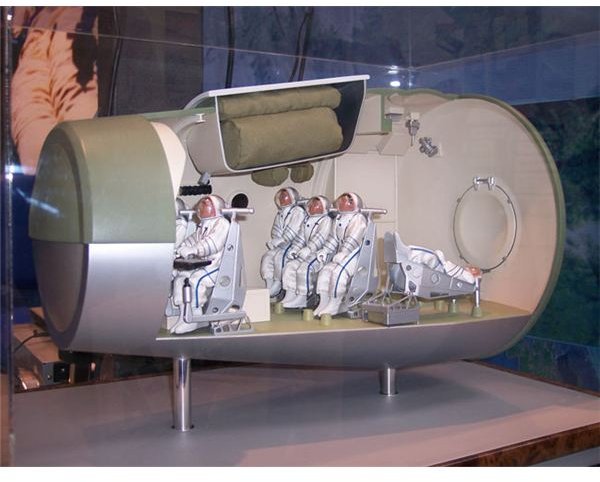Kliper SpaceCraft - Soyuz Replacement That Wasn't To Be Just Yet - History and Overview of Russian Space Craft
Introduction - The Beginning
The beginning of the Kliper program can be placed in 1994 when a group of scientists at Energia patented the design in August of that year under the description, “Spacecraft for the reentry in the atmosphere of a planet and method of reentry of a spacecraft in the atmosphere of a planet.”
This vehicle was to be biconical with a flat bottom that would be the heat shield for atmospheric reentry. It was to consist of the nose, with a conical shield to protect the front of the spacecraft, the main zone, and the body flaps. The main part of the vehicle would provide lift for the craft during atmospheric reentry, with body flaps allowing the pilot to control the spacecraft at that time. The vehicle was to land horizontally and used the principle of lifting bodies for flight. In other words, it was to have no wings, but the spacecraft body itself would function as a wing.
Kliper (Clliper) Spacecraft Images


The Impressive Presentation
In 2005, those attending the Paris Air Show saw a full-scale mock-up of Kliper, Russia’s proposed spacecraft. Kliper was envisioned as a multi-use vehicle to replace their longtime workhorse craft, the Soyuz. Possible future destinations for the Kliper were billed as the International Space Station, Mars, and the Moon. It could also function as a rescue craft for space station crews in trouble.
Russian space officials said that the Kliper could carry up to six passengers including two pilots, with the other four seats reserved for astronauts or space tourists. It would also be able to carry up to 700 kg of cargo. Ideally, it could be launched from European and Russian spaceports. The Kliper would be launched on a Russian Onega rocket, a modified Soyuz carrier rocket.
The Program
With spacecraft, change was certainly expected, and until 2007 the Kliper was still an official part of the Russian spacecraft upgrade program and was to be developed as the final stage of the Russian manned and cargo craft overhaul. The stages of this program would have included:
- Upgrade of the Soyuz vehicle to carry two professionals and two passengers, or “space tourists.” It would be able to dock with the International Space Station, slingshot around the moon, and return to earth at 40,000 km per hour, the same as its escape velocity.
- Development of the Parom reusable transport system to replace the Progress cargo spacecraft. Parom would be made up of a reusable orbiter and expendable freight containers that could carry up to 12 metric tons. Progress can now only deliver 2.5 metric tons of dry and liquid cargo to the ISS.
- The final stage of the craft overhaul would include the Kliper reusable space shuttle. The fuselage of the Kliper would be protected by tiles similar to those used on the U.S. Space Shuttle. This version was designed with a winged body to increase the vehicle’s maneuverability and reduce g-loads on the Kliper crew.
Funding Problems
The Russian government in 2005 decreed that Kliper would be part of the Russian space program for the decade from 2005 to 2015. However, getting the necessary funding, which amounts to billions of rubles per year, would have required help from the European Space Agency. No agreement was ever reached, however.
In mid 2006, RKK Energia stopped work on Kliper, and the call for proposals by the Russian Space Agency was closed without choosing a contractor.
The Future?
In 2008, Energia proposed a new document comparing the three versions of the Kliper that had been envisioned so far: the lifting body design, winged version, and hybrid version, along with Soyuz and a new return capsule. Though Energia officially stopped work on the Kliper in 2007, it remains on the back burner and has not been completely abandoned, though any future version may bear little resemblance to the previous designs.
References
https://www.space.com/news/050615_kliper_pas.html
https://www.worldlingo.com/ma/enwiki/en/Kliper/6
https://www.russianspaceweb.com/spiral.html
https://yomi.mobi/egate/Kliper/a
https://www.buran-energia.com/kliper-clipper-shuttle/kliper-desc.php
